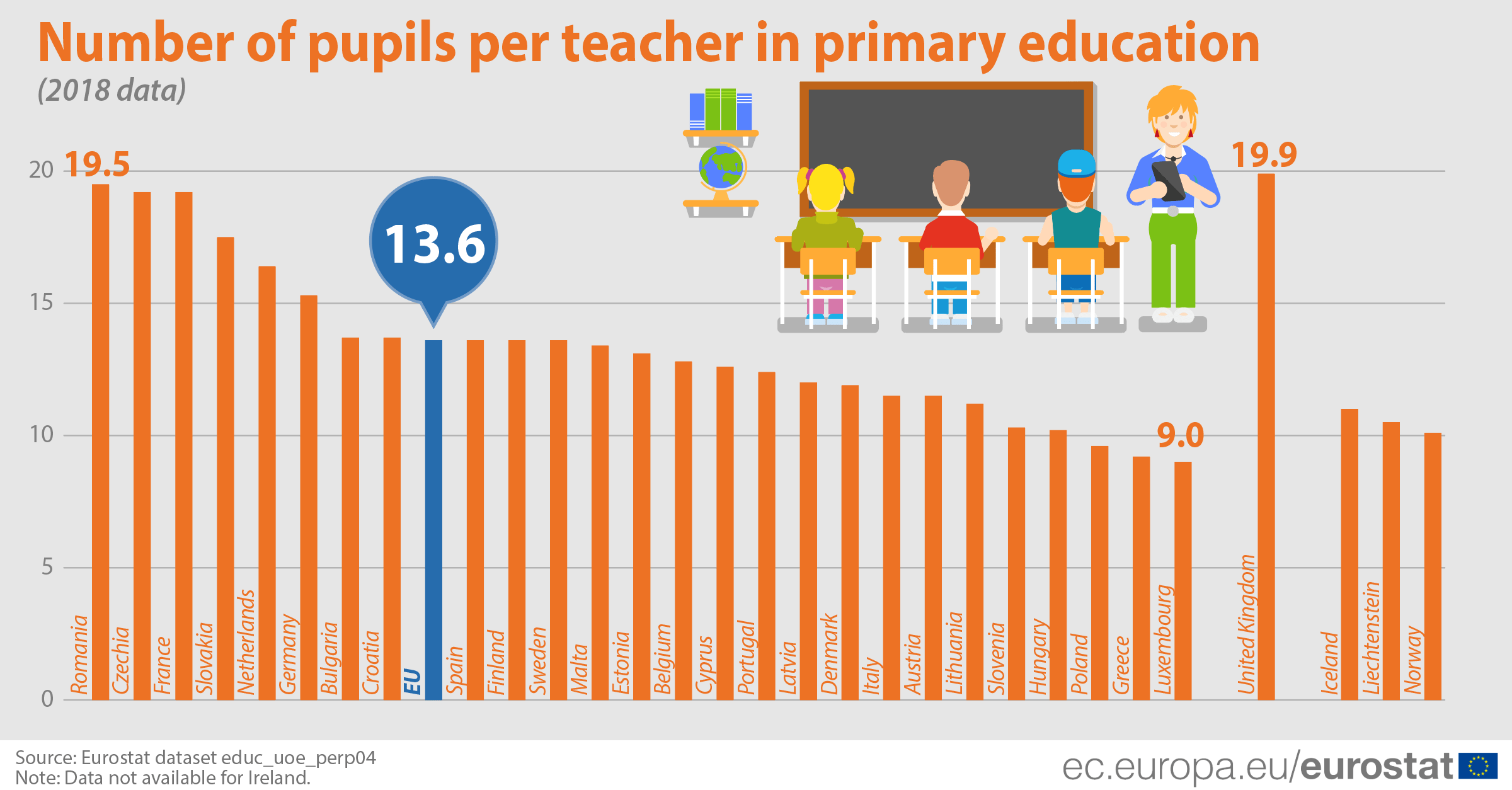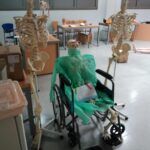During the year 2018, there was an average of 14 students per teacher in Primary Education in EU countries.
In 2018, at primary education level, there were 24.5 million pupils and 1.8 million teachers in the EU Member States. Generally speaking, pupils enter primary school programmes (classified as ISCED level 1) between the ages of 5 and 7. These programmes are typically designed to give pupils a sound basic education in reading, writing and mathematics, along with an elementary understanding of other subjects such as history, geography, natural and social sciences, art and music.
Across the EU, the average number of pupils per teacher at primary level decreased from 14.3 in 2017 to 13.6 in 2018, though the figures vary across EU Member States. The highest pupil-teacher ratios in 2018 were reported in Romania (19.5), Czechia and France (both 19.2).
At the other end of the range, the lowest ratios were recorded in Luxembourg (9.0), Greece (9.2) and Poland (9.6).
The pupil-teacher ratio is calculated by dividing the number of full-time equivalent pupils by the number of full-time equivalent teachers teaching at ISCED level 1. The pupil-teacher ratio should not be confused with average class size as it does not take into account special cases, like the small size of groups of special needs pupils or specific subject areas, or the difference between the number of hours of teaching provided by teachers and the number of hours of instruction prescribed for pupils.








Leave a Reply